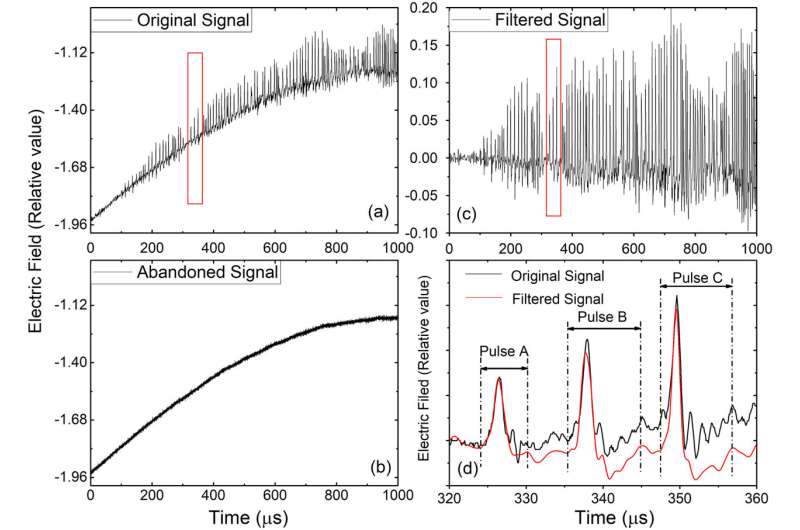This article has been reviewed according to Science X's editorial process and policies. Editors have highlighted the following attributes while ensuring the content's credibility:
fact-checked
peer-reviewed publication
trusted source
proofread
Scientists develop new method to estimate electrical parameters of regular pulse bursts in lightning

The phenomenon of regular pulse bursts in lightning research is characterized by continuous pulses occurring at regular intervals, resulting in intermittent rapid changes in the electric field at ground level. The individual pulses last for microseconds, while the entire sequence can last for milliseconds. The mechanism behind their occurrence has long puzzled scientists.
Researchers from the Northwest Institute of Eco-Environment and Resources of the Chinese Academy of Sciences, in collaboration with colleagues from the New Mexico Institute of Mining and Technology, the Chinese Academy of Meteorological Sciences and Fudan University, have provided new insights into the channel evolution and electrical parameters of lightning regular pulse bursts.
The study, titled "Channel Development and Electric Parameter Characteristics of Regular Pulse Bursts in lightning," is published in Geophysical Research Letters.
The researchers used a new physical model and particle swarm optimization method to estimate the currents and propagation velocities of successive pulses. They also identified the highly overlapping nature of the channel development of these pulses.
Based on conventional observing conditions, the previous estimates of the K-process development rate indicated currents as high as 88 kA, exceeding those of most ground discharges. However, very high frequency lightning interferometer observations revealed that these pulses propagate much faster than expected, at about 0.6 to 1.8 × 108 meters per second, reducing the estimated currents from 88 kA to 6 to 18 kA.
The team's new method for positioning the lightning interferometer has significantly improved the time resolution of the observations, increasing it from microseconds to nanoseconds.
This study introduces a new analytical tool to provide innovative methods and perspectives for future lightning observations and analysis. Additionally, the in-depth study of the mechanisms behind regular lightning pulse bursts is expected to shed light on other similar natural phenomena.
More information: X. Fan et al, Channel Development and Electric Parameter Characteristics of Regular Pulse Bursts in Lightning, Geophysical Research Letters (2024). DOI: 10.1029/2023GL106582
Journal information: Geophysical Research Letters
Provided by Chinese Academy of Sciences




















